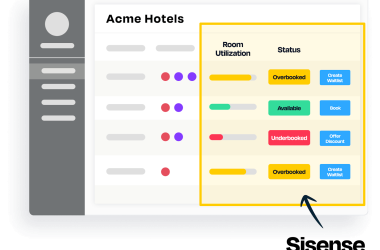Have you ever read a piece of marketing content and just wanted to gag? As marketers, we’ve all been there. Truth be told, we’ve probably all been responsible for some pretty cringe-worthy messaging ourselves.
It’s easy to get caught up in jargon, features, and internal-facing language that leaves customers confused and disengaged – or worse. But what if you could write messaging that not only makes sense but also makes people want to buy from you?
In this article, you’ll discover how to create compelling, customer-centric messaging that drives results. We’ll explore common messaging mistakes and actionable solutions to ensure your content resonates with your audience, builds your reputation, and ultimately, helps you win hearts, not eye-rolls.
The real value of messaging
Two main parties benefit from great messaging: the business and you, the product marketer.
Good messaging helps the business find the right customers, tell them why you’re different from the competition, and clearly show the value of your product or service. Critically, it also sets the right expectations, which is key for building long-term customer relationships and encouraging repeat business.
As PMMs, strong messaging is a pathway to a great reputation, a promotion, or a new job. On the flip side, poor messaging can undermine all of those things. Messaging is a fundamental part of our job, and it’s important that we take the time to think about it strategically.
For expert advice like this straight to your inbox every Friday, sign up for Pro+ membership.
You’ll also get access to 30+ certifications, a complimentary Summit ticket, and 130+ tried-and-true product marketing templates.
So, what are you waiting for?
5 messaging mistakes and how to solve them
Bad messaging can confuse your customers so much that they don’t even know what your product is. It can also be so muddled that they can’t figure out what to focus on. Sometimes, messaging can even come across as pretentious, or it can make customers wonder, “So what? Who cares?”
The good news is that these mistakes are fixable. Let’s look at a few examples of messaging problems, their causes, and how we can fix them.
Problem #1: Too much jargon
At Salesforce, we once launched a product called Genie. It was described as a “hyperscale, real-time data platform that powers the entire Salesforce Customer 360 platform.”
Perhaps unsurprisingly, employees kept asking, “What is that?” We got so caught up in the technical language that even our own people didn’t understand it.
Solution: Explain it like you would to a colleague
When you find yourself stuck in a jargon cycle, there’s a simple trick to break free. Ask yourself how you’d explain the product to a colleague who asks what you’re working on.
You wouldn’t say, “I’m working on a hyper-scale, real-time data platform.” You’d probably say something like, “I’m working on a new data product that brings data together so customers can do really good marketing.” Now, I’m not saying you should use this exact phrasing in your marketing copy, but it’s a great foundation to build from.
Today, Salesforce has changed the product name to Data Cloud, and it’s described as a product that can “unify data across any industry for smarter, tailored customer experiences.” Simple, clear, and easy to understand.
Problem #2: Your customer can’t tell what your product is
Sometimes, in our efforts to create a compelling value proposition, we forget to tell people what our product is. A few years ago, Salesforce used the slogan, “Run your business from your phone.” It’s a great value proposition, but does it tell you what Salesforce sells? Nope. (It’s a CRM, by the way.)
Solution: Use plain language to tell customers what you’re selling
Don’t prioritize value so much that you forget to say what your product is. Allow yourself the space to use plain language that your customer will understand. It’s worth it to make sure they’re not left frustrated and confused.
Problem #3: Customers don’t know what to focus on
We’ve all seen a piece of marketing that tries to say everything at once. This often happens when we’re excited about a new product and want to share every single detail. But when you give your audience too much to focus on, they end up focusing on nothing.






![developing-a-high-performance-team-[product-marketing-certified:-leadership]](https://prodsens.live/wp-content/uploads/2023/06/12290-developing-a-high-performance-team-product-marketing-certified-leadership-380x250.png)